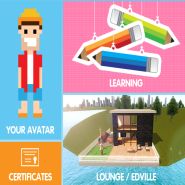Students who speak English as a second language can face multiple barriers to education. It is important that we strive to enable these pupils to have full access to the curriculum, allowing them to develop autonomy and achieve in mainstream education.
In order to do this, here are our top 5 strategies to support your ESOL pupils, which can be adapted to suit both group workshops and the mainstream classroom:
1. Communication
Activities should be communicative i.e. activities should prompt the learners into communicating with each other. Encouraging discussions through question and answer sessions can work well for any subject area in the classroom. This approach can work to develop your pupils’ natural interaction skills when using the English language.
2. Relevance
Use topics and situations that are relevant and learners can relate to e.g. something they experience day to day like shopping, travelling on a bus, applying for a job, etc. If it’s something they have no experience of and are not going to encounter in their daily lives then they will struggle to talk about it (even in their first language!).
Remember that like any other learner, pupils with English as a second language will have different learning styles. Take this into account when planning any activity; experiment with the use of visual, kinaesthetic and auditory techniques, this may be beneficial to all students alike.
3. Use realia
Bring in real resources e.g. supermarket leaflets, food packaging, newspapers, catalogues, bus timetables, etc. The beauty of this is that all subjects will have some kind of resource that can be used and adapted for this purpose.
Mock resources can be very useful practice but may not adequately prepare them for the real experience.
4. Literacy
Get to know learners’ literary abilities and ensure all resources are appropriate to this level. If someone is totally illiterate, start with the basics: don’t give them a wordsearch!
Developing pupils with basic literacy levels is not an easy task, but, as with any pupil, literacy development is cross-curricular, therefore language issues can be addressed in all subject areas.
5. Modelling and scaffolding
Particularly with low level ESOL, as the teacher’s ability to verbally explain will be limited for these pupils. Activities should be modelled by the tutor at the start to demonstrate what they will be doing. Scaffold learning by starting off basic and progress to more complex language through the various tasks e.g. kick off with some basic vocab, progress to forming a basic sentence, finish with asking and answering questions. This way learning is reinforced as they progress through the tasks.









